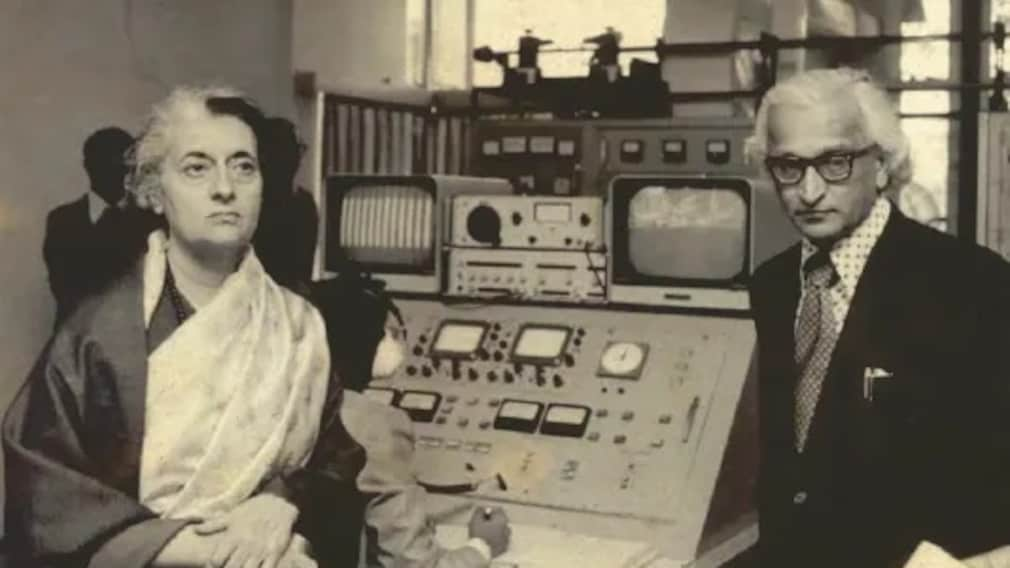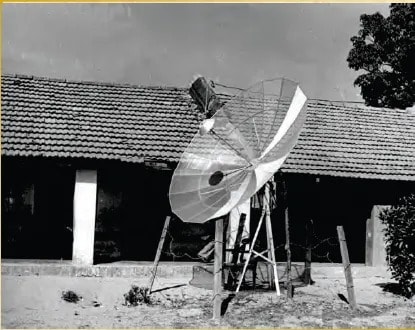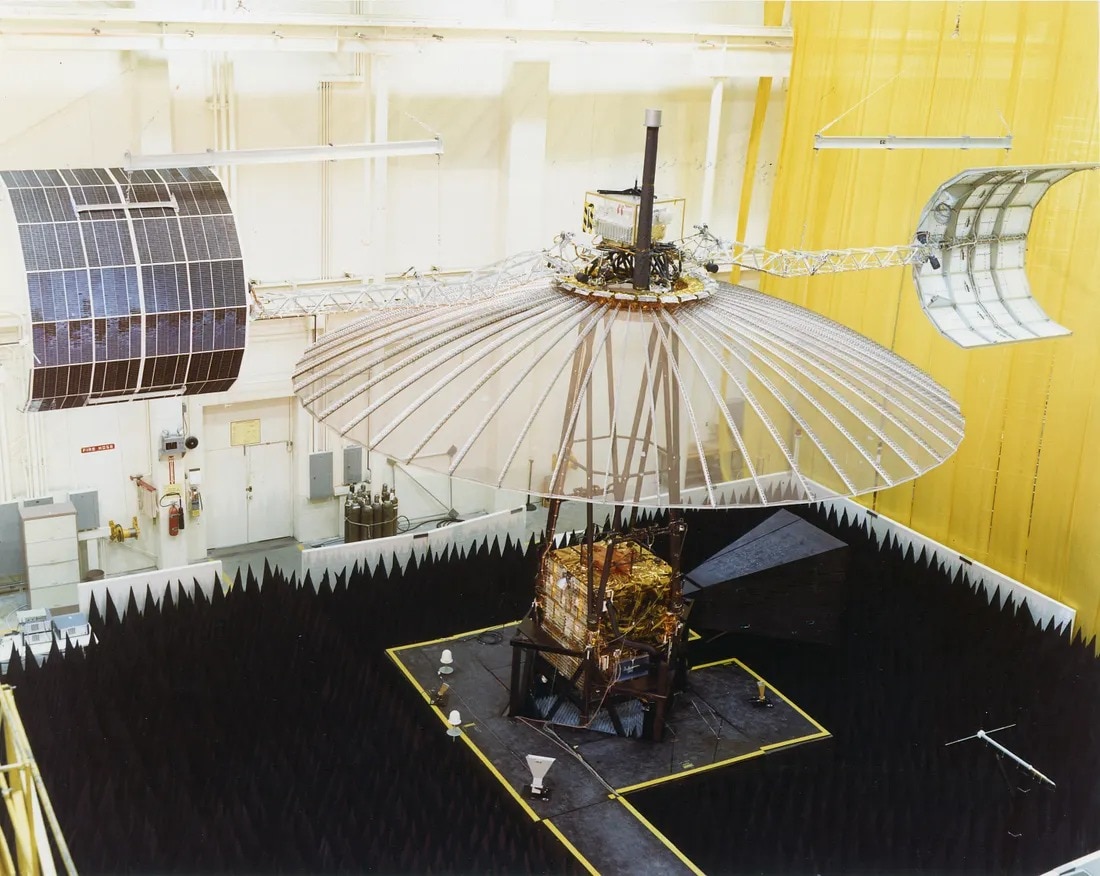From Cow Dung To Cosmos: How India Gave The World Direct-To-Home Television
A collaboration between ISRO and NASA, SITE not only revolutionised rural education but also laid the foundation for what the world now knows as direct-to-home (DTH) TV.

Fifty years ago, on August 1, 1975, India quietly launched one of the most transformative experiments in global communication history -- the Satellite Instructional Television Experiment, or SITE. A collaboration between the Indian Space Research Organisation (ISRO) and the American space agency NASA, SITE not only revolutionised rural education and development in India but also laid the foundation for what the world now knows as direct-to-home (DTH) television.
In an exclusive interview with NDTV, Dr Kiran Karnik, a key architect of SITE and later head of the Discovery India channel, reflected on the scale, ambition, and legacy of the experiment. "It was probably the most exciting phase of my career," he said. "And not just for me-many of us involved with SITE still say it was the most fulfilling and satisfying work we ever did."
A Satellite Umbrella In Space
SITE was powered by NASA's ATS-6 satellite, a technological marvel of its time. "It had a 30-foot diameter dish, something like what the NISAR satellite has," Dr Karnik explained. "You couldn't launch a 30-foot satellite directly, so they designed it like an umbrella-folded during launch and is deployed in space."

This innovation enabled the first-ever direct broadcasting from space. "In many ways, this was the precursor of what today you call DTH," Dr Karnik said. "The unique thing was, this was the first time for such an experiment anywhere in the world on this scale to take television programmes out to really remote areas."
Community Viewing In Remote Villages
SITE wasn't just about technology -- it was about impact. The experiment reached 2,400 villages across six Indian states, including Odisha and Bihar, where electricity was scarce and floods were frequent. "We ran the TV sets on batteries because there was no power," Dr Karnik recalled. "Some of our maintenance teams had to go via Nepal during the monsoons to reach the villages."
Despite the challenges, the uptime of these rural TV sets was better than urban ones. "Young engineers in their early 20s maintained these sets with such high motivation that our downtime was less than that of urban TV sets," he said.

The programming was tailored to local needs-agriculture, education, science, and development. "We had area-specific, language-specific content, and a national programme that was common across all regions," Dr Karnik noted.
"Head In The Stars, Feet In Cow Dung"
SITE was a paradoxical blend of cosmic ambition and grassroots reality. "I might summarise it as saying, common to me and many others in ISRO: head in the stars and cow dung on your feet," Dr Karnik quipped. "At one end, you're dreaming big things out in space. On the other, you're rooted in the reality of India."
The ground equipment was entirely designed and developed in India. "NASA provided the satellite, but the Earth stations, electronics, and 10-foot chicken mesh antennas were all made here," he said. "It was like a set-top box, but for community viewing."
Magic In The Eyes Of Children
The social impact of SITE was profound. "Most villagers had then never seen a moving picture," Dr Karnik said. "Suddenly, here was this box that began to deliver images. It was magic. The children were so taken with it, their eyes lit up with wonder."

This emotional connection drove the ISRO culture. "It gave us fulfilment and satisfaction. That's what motivated us," he said.
The Visionaries Behind SITE
Two names stand out in SITE's history: Professor Yashpal and Professor EV Chitnis. "Professor Yashpal was the director of the Space Applications Centre and truly a renaissance scientist," Dr Karnik said. "He brought in dramatists, artists, writers, creating a unique mix of technologists and creatives."
Professor Chitnis, was Dr Vikram Sarabhai's right-hand man, he was the programme manager. "He was the mentor and guide to our young, impatient team," Dr Karnik said. "Even today, at 100, he remains mentally active and remembers everything."
Kheda: Decentralisation In Action
Alongside SITE, ISRO launched the Kheda Experiment in Gujarat, focusing on decentralised rural broadcasting. "We set up a small TV transmitter in a village and worked with cooperatives," Dr Karnik said. "Villagers began making their own programmes. It was participative communication at its best."
Mr Kheda won UNESCO's prize and inspired the spread of low-powered TV transmitters across India. "At one time, Doordarshan was installing one a day," he said.
From SITE To Discovery
After SITE and the countrywide classroom programme, Karnik transitioned to Discovery India channel. "Discovery was focused only on documentaries-real-world entertainment," he said. "It was a challenge to prove that this genre could work in India."
Dr Karnik succeeded. "At the end of five years, National Geographic came in as a competitor. That meant we had created a market," he said.
India's Gift To The World
"The US did a technology demonstration, but the scale and application were unique to India," Dr Karnik said. "Arthur C Clarke the famous science fiction writer then called it the greatest communication experiment in history. Maybe a bit of hyperbole, but there's truth behind it."
SITE's legacy is undeniable. "It spurred the world to get direct-to-home television, starting from rural districts in India," Dr Karnik said. "We need to celebrate that."
The ISRO Ethos
SITE also shaped ISRO's philosophy. "Applications drove technology," Dr Karnik emphasised. "We didn't have satellites or rockets, so we borrowed them. But we built everything else ourselves."
He hopes ISRO continues this ethos. "No vanity projects, no competition for its own sake," he said. "Just competing to see what you can do for the people in this country." This was ISRO's philosophy and a huge legacy inculcated by Dr Sarabhai.
ISRO says Satellite Instructional Television Experiment (SITE), hailed as 'the largest sociological experiment in the world' during 1975-76. This experiment benefited around 200,000 people, covering 2400 villages of six states and transmitted development-oriented programmes using the American Technology Satellite (ATS-6). The credit of training 50,000 science teachers in primary schools in one year goes to SITE.'
A Legacy That Lives On
Today, millions of Indian homes rely on DTH television. Smartphones with satellite-to-phone connectivity are still on the horizon. But the roots of this revolution lie in a dusty villages in India, where a 10-foot dish and a battery-powered TV set brought the cosmos to the community.
"SITE was the catalyst that made ISRO what it is today," Dr Karnik said. This broadcast is what bridged India's digital divide, way back in 1975, well before the Internet became omnipresent.
-
Digital Fraud, Cybercriminals Stole Rs 23,000 Crore From Indians In 2024
Bank-related frauds have increased dramatically; the RBI reported a nearly eightfold jump in the first half of FY 2025/26 compared to the same period last year.
-
Crude Politics: Inside India-Russia Oil Ties Amid Trump's Tariff Tantrum
Before the Russia-Ukraine war, India's crude oil imports from Russia amounted to 0.2 per cent. Fast forward a few years, and Russian oil has surged to become India's top source.
-
Who Rules Under Oceans? US vs Russia Submarine Strength
As Russia and the US return to Cold War-era strategies amid rising tensions over trade and tariffs, here's a look at how they fare under the high seas.
-
Opinion | China, Now Trump: Pakistan And The Art Of Somehow Finding Patrons
Pakistan has successfully lobbied Western capitals into believing in its indispensability in the regional strategic landscape. The US continues to buy this narrative for various reasons, not discounting the naivete among them.
-
Opinion | A Rude Awakening For India: Navigating The Trumpian Tempest - By Shashi Tharoor
To simply buckle under US pressure would be a profound miscalculation for India, yielding not just economic ground but strategic dignity.
-
Opinion | Trump Tariffs: Diplomacy Is Dead. Long Live Social Media Theatrics
Trump's playbook is vintage. He first extends his hand as a friend, then strikes with the force of a bully. His tariffs are not about the principle of fairness. They are a blunt instrument wielded for selfish reasons, for dominance and spectacle.
-
Donald Trump Snubs India, Signs Oil Deal With Pak. What Does This Mean?
The US helping Pak is saying to India - 'toe the line or risk your enemy being strengthened upsetting a key ally (i.e., Washington) while you negotiate a trade deal'.
-
The Story Behind Donald Trump's 25% 'Reciprocal Tariff' On India
Mr Trump has reserved special 'praise' for India on tariffs, accusing it of charing unfairly high taxes on American goods imported into its markets.
-
Opinion | Trump Tariffs: The West Botched Up Russia ... And Now Wants India To Foot The Bill
The West has grudgingly recognised its inability to persuade India not to buy Russian oil. However, anti-Russian lobbies continue to apply pressure on New Delhi, seeing that their goal of imposing a strategic defeat on Russia has proved illusory.
-
Opinion | Lunch, Now A State Award: What's With The Growing Pakistan-US Lovefest?
After years of being ignored publicly by recent American administrations, the turnaround in established policy is baffling. What gives?
-
News Updates
-
Featured
-
More Links
-
Follow Us On










